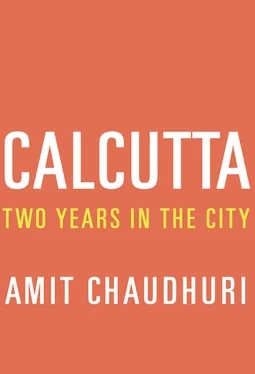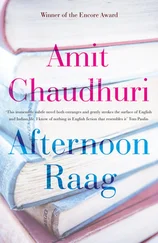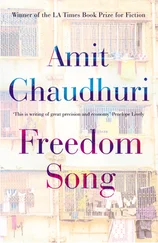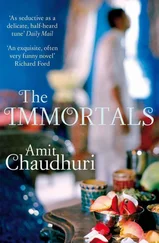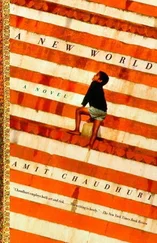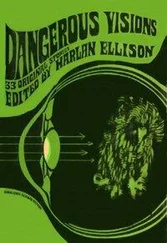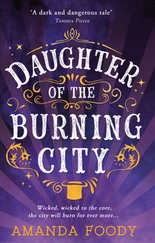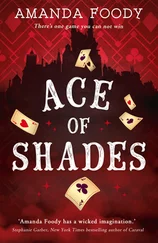
I was promised black coffee while waiting at Mythh, the coffee shop. Canazi was a small, slight, focused man (his squint intensifying his look of concentration), who hadn’t lost his accent, and was quite masterful as he instructed the deferential suited manager to supply my coffee, which had not appeared. He took me to a table in the corner of what was like a gallery or balcony at the edge of the coffee shop, which looked large and lit from where we were, like the stalls or orchestra in a theatre, and our location and observation point adventitious, remote, à la the theatre box in La Loge . This balcony was Canazi’s privileged Italian promontory inside Mythh, an extension of the coffee shop, but gently separated from the hoi polloi milling towards the buffet by an elegant railing, a change of floor tiling, and a lakshman rekha or invisible boundary. The diners in the balcony (which was a balcony partly of the imagination, since it was on the same level as the coffee shop) may as well have been invisible to those in the stalls.
One of the first things I learnt from Mr. Canazi was that his name was actually Davide Cananzi — he handed me his calling card — and that he’d joined the Hyatt in 2004 and worked there for one and a half years. “Canazi” was chef Mukherjee’s well-intentioned misnomer; Cananzi was the man before me. “I would have left in three months,” he admitted, with the air of one reminiscing about an episode whose immediacy diminishes as the days pass, “but I met Suparna and I got married.” “Where did you meet her?” “In the Hyatt,” he said. “She was in customer relations.” They’d married in 2004—an almost instantaneous development, then, which points to an auspicious momentum in Cananzi’s beginnings here.
He was Sardinia-born, bred in Toscana. When he left Italy for Berlin and Paris he was only sixteen, but already, precociously, had a diploma in hotel management. He worked in Dubai and Barbados before he found himself, in 2004, at the Calcutta Hyatt.
“I would have left in three months,” he said again. “Calcutta wasn’t ready for innovation.”
He spoke, in his long, retrospective assessment, of 2004 as if it were another age — by “innovation” he meant the uncompromising taste of Italian food, and a deep resolve to ignore local demands and tantrums.
“In the first two months, I had fifteen to twenty covers,” he said, still scarred by that experience of adversity. By “covers” he meant daily customers at the restaurant. Then, self-belief — and the hotel’s willingness to go out on a limb and back him — led to triumph. “By the third month, we had fifty covers.” He had not diluted his menu. “It was a challenge to educate people to eat as I eat.”
William Jones’s late-eighteenth-century mission, in the end, was to educate Western scholarship about Indian antiquity and the Sanskritic inheritance; he pieced these together painstakingly through his researches here, in between appearances at the court and fulfilling his duties as a judge. His precursor, Nathaniel Halhed, a “writer” for the East India Company, and a translator, had, besides composing English poetry, clarified to the local populace the rules of their own language, compiling, with the collaboration of Brahmins, the first Bengali grammar in 1774. Cananzi, two hundred years later, was neither intent on giving Bengal to Bengalis, or India to the world; he was engaged in a more resistant task, in an environment that was, in this regard, oddly unprepared — the unnoticed business of bringing Italy to Bengal.
“Local basil is fantastic,” he said, with a characteristic generosity towards conditions on the ground. “But it has an aftertaste of mint.” The taste of “real” basil was unknown to the people around us. Such hurdles were conquered and made irrelevant; and there was his already-stated adherence to the principles of Italian food, his inability to relax the rules, unlike, say, Alex Bignotti — a chef he adored and whose culinary skills he admired. “For instance, if you make penne arrabiata with mushrooms, do not call it penne arrabiata. By all means make it, but call it something else.” This was only a hypothetical recipe; but it symbolised the fact that the Italian character and its quiddity tended to disintegrate and vaporise in the Bengali context.
What was it, after all, to be Italian — especially here? Cananzi confessed that the “name tag” of “Italian chef” had “become a burden.” Other chefs of his rank were simply called “executive chefs”; but the moment people heard he was Italian, he became, inescapably, “Italian chef,” as if he couldn’t possibly rustle up tandoori or Japanese — which he said he enjoyed doing. This was a surprising turn: that Cananzi, at least on some level, felt pinned down to Italian cuisine. “What kind of food do you have at home?” I asked. “Mostly Indian food,” he shrugged, “Bengali food.” I had a vague, provisional vision of him with his family, in home clothes, busily partaking of daal and rice. “Do you speak Bengali?” I asked him. Half my mind, as I put the question to him, was already ferreting away, unearthing similarities between Bengali and Italian. This habit of mine, belonged, of course, to a line opened by William Jones, who, late in the eighteenth century in this city, had hit upon his theory of “Indo-European languages,” a family of tongues including Bengali, Hindi, English, French, Persian, Italian, Greek, Latin, whose words derived their roots, he claimed, from Sanskrit. I knew very little Italian, except what I’d memorised from the menu, words such as “carbonara” and “penne,” but had noted, once, that certain everyday words spoken in Spanish and French, like, say, “que” or “pourquoi” for “what” or “why,” were near identical to “ki” or “kya” and “kyon” in Bengali and Hindi respectively. Also “basta,” or “enough!” frequently heard in Almodóvar films, seemed like a close neighbour to the North Indian “bas,” meaning the same thing. But these exclamations or imperatives were the language of daily parlance, of the community, and I didn’t know whether “basta” or “bas” had a Latinate or Sanskritic pedigree — but there were any number of grander words where that lineage seemed irrefutable, and rang out repeatedly and gravely like a bell tolling, as in the Latin “morte” for death (the ugly Anglo-Saxon “murder” in all likelihood a descendant of the same family) and the Sanskrit “mrityu.” Where would all my amateur speculations have been if not for that Welshman, who, with other British people, and the great Bengalis to follow, had turned Calcutta into a crucible of world history? “Yes, I know Bengali,” said Cananzi. “I know it quite well.” I didn’t care to test him. “It was tough learning Bengali,” he confessed. “Also, I had little English at the time — I had to leap straight into Bengali.” Then he added something at which I pricked up my ears. “There are lots of words in common between Italian and Bengali — also between Italian and Arabic, you know?” This latter insight must have come to him during his stint in Dubai — and, anyway, the Ottoman Empire’s reach had been immense since the fifteenth century onward — but I was more interested in the overlaps with Bengal, with which Italy had had no significant historic interchange since Tagore’s visit there at the beginning of the Duce’s reign. “For instance?” I asked him. “Like forno , for instance — it is the word for oven in Italian. It is also the same word in Bengali.” “Excuse me?” Cananzi had been misled; the Bengali word for “oven” is surely unun . “I haven’t heard that word,” I said, puzzled. “But you know — the English ‘furnace’ is very close to it.” I pointed this out in a conciliatory way. “Are you sure?” said Cananzi. “I was told by a Bangladeshi that you have forno in Bengali.” We placed the debate in abeyance. I began to gossip with him about other Italian chefs in the city, a part of me still wondering if he’d noticed the proximity of al dente — the ideal chewiness of slightly undercooked pasta — to the Bengali daant , whose ancestor is the Sanskrit danta. “Danta,” “dental,” “dente” : all variations of “teeth.” At some point down millennia, the coordinates that governed and linked certain languages to others were lost. Then along came Jones, who, in his imperious way, suggested that once there used to be a bit of the European in the Oriental, and vice versa. This notion was embraced with alacrity by the new Indian, especially the Bengali, eager to join the freemasonry of the modern, and eventually forgotten by all but a handful of Europeans. For Cananzi, whatever his recent affections, Calcutta certainly was no Rome.
Читать дальше
